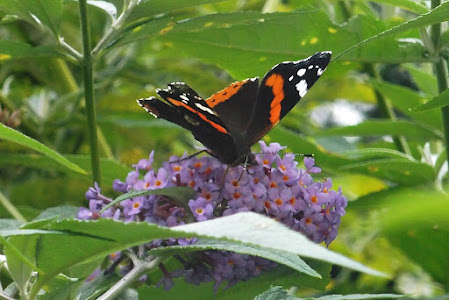In the UK, the last Monday in August is a Bank Holiday - that is to say a public holiday. The August Bank Holiday weekend is one of the busiest of the year, the roads clogged by traffic as people try to make the most of the holiday by travelling to seaside resorts and other tourist destinations. Most schools start back in the first week of September, so there's very much a sense of grabbing the last chance for some carefree fun while the weather is still likely to be favourable and before we all return to the seriousness of work and school. In the national psyche it marks a turning point where Summer is definitely over and Autumn is poised to take over fully.
It's a perfect example of the unrealistic idea of seasonal changes we have in our heads. None of the seasons start or finish abruptly on a given date of course, they ebb and flow, morphing slowly and subtly into each other. But it's interesting to notice how people's expectations colour their experience of the seasons - they seem almost affronted if warm and sunny weather doesn't appear on cue in June as they feel it should be, they're disappointed when it doesn't snow at Christmas, and they seem to expect leaves to start changing colour and falling as soon as September appears.
This weekend does mark a turning point, but it's an internal rather than an external one. Perhaps the negative feelings people have about Autumn are based more on the human-imposed realities of having to leave the beach and return to school or the office than any flaws inherent in the season itself.
Embracing Autumn: Seasonal Turning Points
In your journal, examine your feelings about Autumn and the other seasons. What are the stereotypes you see in your mind when you imagine Autumn, Winter, Spring and Summer? How do they compare to reality? It may be helpful to do this exercise in tandem with tracking seasonal changes with your camera over the coming weeks and months - the results could be surprising!





















